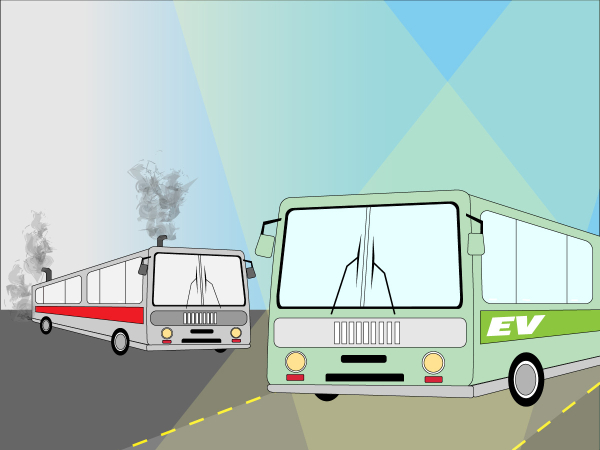Some nations are leading the pack in green public transportation. Electric buses require less maintenance, drive smoother and cost less over their lifespan. They also help reduce carbon dioxide emissions.
Leaders in electric bus transportation.
Most people have heard about driving an electric vehicle to lower their carbon footprint. Or taking public transportation, instead. There may be a way that the modern world can have both. 
The Center for Climate and Energy Solutions says that individuals can save around $9,700 annually by using public transportation. They can also decrease their carbon dioxide footprint by about 270,000 pounds of carbon dioxide each year. How does one do this? By foregoing a private vehicle and using public transportation.
The public could both save money by using a city bus system and decrease their CO2 emissions with electric powered buses. Although, depending on where you live, that might be easier said than done. 
While electric buses are taking off in Europe, the United States is slower in its adoption. According to Sustainable Bus, 20% of the European city bus market was made up of electric buses in 2022. The percentage of city buses in the US which are electric is a mere 2%.
For example, out of the approximate 6,000 city buses in New York City, only 15 of them are electric. 
In August of 2022, the Federal Transit Administration said 1,100 electric buses will be added to the U.S. e-bus fleet. This is a step forward, but it doesn’t compare to the European market’s steady increase over the last three years. Not to mention China, who by far holds first place in e-buses with around 421,000 green vehicles.
Let’s talk about electric bus technology.
There are many concerns when it comes to electric vehicles: How long does the battery last? Are there charging stations available?
Most of the time, electric vehicle charging is done at the vehicles ‚Äėhome‚Äô. According to Cummins Inc., there are two main ways to charge an electric bus fleet. The first being your average plug-in charger. The second, being a pantograph charging station.
Once the bus pulls into the charging station, robotic arms attach themselves to the top of the bus. These arms connect to electrical conductors located on top of the vehicle.
Pantograph chargers generally take less time for a vehicle to fully charge because they use direct current (DC) chargers. Plug-in chargers can be alternate current (AC) or DC.  Pantograph chargers can also charge up to 350 KW, while plug-in chargers can only charge up to 150 KW. 
Benefits of electric buses versus diesel buses. 
Electric motor buses are quieter, drive smoother, and can accelerate faster than the average diesel fueled bus. They also cost less to maintain on average. For example, there is less strain on their brakes because electric buses use ‚Äėregenerative braking‚Äô.¬†
Regenerative braking captures kinetic energy that feeds back into the bus’s battery and decreases wearing down of the brakes. Most diesel fueled buses do not have this kind of braking system.¬†¬†
It’s a win-win.
The transportation sector makes up the majority of the CO2 emissions that humans emit. These emissions can be decreased with green public transportation. So let’s decrease our emissions, and save money, by giving green transportation a try.
Sources 
https://www.cummins.com/news/2021/07/01/5-questions-about-electric-buses-answered



